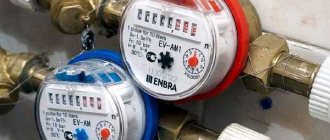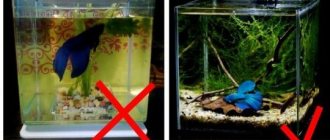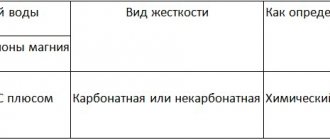07.10.2019
How much will it cost to send your cargo to its destination? To answer this question, you need to know its volume in cubic meters, since transport companies most often indicate the cost of services in these units of measurement in their price lists.
Cardboard boxes are the most profitable and convenient type of packaging for most goods. When choosing corrugated packaging for your products, you need, first of all, to calculate the volume of boxes and order the required number of boxes so as not to transport air and not overpay for transport services.
If, as a result of the calculation, it turns out that you require corrugated packaging of individual sizes, ours will produce the required quantity to order. Let's look at how to correctly calculate the volume of a cardboard box.
How to calculate the volume of a pan in liters, formula
To calculate the volume of a pan in liters, you need to measure the diameters and heights of the container.
Depending on the shape of the pan, the diameters may vary.
It is advisable to take dimensions from the inside to remove the wall thickness from the calculation. And as mentioned above, the height of the pan is measured at right angles to its base.
Next, the obtained values must be substituted into the formula:
Volume of the pan = ( 1/3 * Pi * h * ( (D/2)² + ((D/2) * (d/2) ) + (d/2)² ) ) / 1000
Please note that the values are substituted into the formula in a single measure of measurement, in our case these are centimeters.
Instructions for calculating the amount and volume of liquid in a tank
Enter dimensions in millimeters:
D – the diameter of the container can be measured with a tape measure. It must be remembered that a diameter is a segment of the greatest length connecting two points on a circle and passing through its center.
H - the liquid level is measured using a meter rod, but if such a tool is not at hand, use a regular wire rod or a wooden strip of suitable length. Observing safety precautions, lower the rod strictly vertically into the tank to the bottom, mark a level on it, remove it and measure with a tape measure. You can also determine H by measuring the distance from the top of the tank to the surface of the liquid and subtracting this indicator from the diameter value.
How to calculate the volume of a cylinder
- First you need to choose through which initial quantities the calculations will be made. In order to find the volume of a cylinder, you need to know its height, as well as its radius, diameter or base area. Each method uses its own formula.
- Next, you need to enter the initial values and units of measurement of the initial values.
- The result will be rounded to the specified decimal place.
- The volume of a cylinder can be expressed in mm3, cm3, dm3, m3 and liters.
- The “calculate” button performs calculations according to the specified condition.
Step-by-step calculation of the volume of a cardboard box
To calculate you need:
- Measure the length a
and width
b
, if the bottom of the box is square, then a=b; - Measure the height h
as the distance from the bottom to the top flap of the box.
First you need to calculate the internal volume of the box required to accommodate the cargo. The overall dimensions of the cargo should be 5–10 mm smaller than the internal dimensions of the corrugated packaging.
Formula for calculating the volume V in m3 of a box with a rectangular or square base: V=a*b*h
where a is the length of the base (m), b is the width of the base (m), h is the height of the box (m).
If the base of the box is not a rectangle, but a triangle, pentagon or hexagon, then the formula for calculating the volume will be: V=S*h
where S is the area of the base of the box, and h is its height.
The volume occupied by the workpiece (box) (taking into account the wall thickness) is calculated for proper placement inside a vehicle or storage in a warehouse. Formula for calculating the occupied volume:
V=Area (S) * sheet thickness
*how to calculate the area (S) of a cardboard box - in this article
| Type: | Profile: | Thickness (mm): |
| Three-layer corrugated cardboard | B | 3 |
| Three-layer corrugated cardboard | C | 3,7 |
| Three-layer corrugated cardboard | E | 1,6 |
| Five-layer corrugated cardboard | B.C. | 7 |
| Five-layer corrugated cardboard | BE | 4 |
Multiplying the obtained values, we get the volume of the box in cubic meters. To get the result in liters, you need to multiply the resulting value in m3 by 1000.
How to determine the volume of a spherical product
Spherical products are found in our lives almost every day. This could be a bearing element, a soccer ball, or the writing part of a ballpoint pen. In some cases, we need to learn how to calculate the cubic capacity of a sphere to determine the amount of liquid in it.
According to experts, to calculate the volume of this figure, the formula V=4/3ԉr3 , where:
- V – calculated volume of the part;
- R is the radius of the sphere;
- ԉ is a constant value that is equal to 3.14.
To carry out the necessary calculations, we need to take a tape measure, fix the beginning of the measuring scale and take measurements, and the tape measure should pass along the equator of the ball. After this, find out the diameter of the part by dividing the size by the number ԉ.
Now let’s look at a specific example of a calculation for a sphere if its circumference is 2.5 meters. First, let's determine the diameter 2.5/3.14=0.8 meters. Now we substitute this value into the formula:
V= (4*3.14*0.8³)/3=2.14m³
How to find out the volume of a rectangular container
In the construction industry, all volume indicators are reduced to specific values. Calculations can be carried out in liters or dm3, but most often cubic meters are used to determine the amount of a particular material. We will further describe how to calculate the cubic capacity of the simplest rectangular containers using a specific example.
To work, we will need a container, a construction tape measure and a notepad with a pen or pencil for making calculations. From a geometry course we know that the volume of such bodies is calculated by multiplying the length, width and height of the product. The calculation formula is as follows
V=a*b*c , where a, b and c are the sides of the container.
For example, the length of our product is 150 centimeters, width 80 centimeters, height 50 centimeters. To correctly calculate the cubic capacity, we convert the indicated values into meters and carry out the necessary calculations V = 1.5 * 0.8 * 0.5 = 0.6 m3.
How to calculate the volume of a tank made in the form of a cylinder
Similar geometric shapes are used for storing food, transporting fuel and other purposes. Many people do not know how to calculate the volume of water, but we will describe the main nuances of this process further in our article.
The height of the liquid in a cylindrical container is determined using a special device called a meter rod. In this case, the tank capacity is calculated using special tables. Products with special volume measurement tables are rare in life, so let’s approach the problem in a different way and describe how to calculate the volume of a cylinder using a special formula - V=S*L, where
- V is the volume of a geometric body;
- S – cross-sectional area of the product in specific units of measurement (m³);
- L is the length of the tank.
The L indicator can be measured using the same tape measure, but the cross-sectional area of the cylinder will have to be calculated. The S indicator is calculated using the formula S=3.14*d*d/4, where d is the diameter of the cylinder circumference.
Now let's look at a specific example. Let's say the length of our tank is 5 meters, its diameter is 2.8 meters. First, let's calculate the cross-sectional area of the geometric figure S = 3.14 * 2.8 * 2.8/4 = 6.15 m. And now you can start calculating the volume of the tank 6.15 * 5 = 30.75 m³.
Convert cubes to liters and back
Liter (designation - l; L or l) is a non-systemic metric unit of measurement of volume and capacity, equal to 1 cubic decimeter.
— The name liter comes from the French unit “litron”. It was used to measure bulk solids. Its size was less than a modern liter and was about 830 grams. The name “litron” originates from a coin of that time - LITER, which had the corresponding weight - about 830 grams.
— In 1901, the definition of a liter was adopted: the volume occupied by 1 kg of water, at a water temperature of +3.98 degrees Celsius and 1 unit of atmospheric pressure.
Volume calculation
Liquid displacement method
The volume of an object can be calculated using the fluid displacement method. To do this, it is lowered into a liquid of a known volume, a new volume is geometrically calculated or measured, and the difference between these two quantities is the volume of the object being measured. For example, if when you lower an object into a cup with one liter of water, the volume of the liquid increases to two liters, then the volume of the object is one liter. In this way, you can only calculate the volume of objects that do not absorb liquid.
Volumes in cooking
Liquids in cooking recipes are usually measured by volume. Bulk and dry products in the metric system, on the contrary, are measured by mass.
Tea spoon
The volume of a teaspoon is different in different measurement systems. Initially, one teaspoon was a quarter of a tablespoon, then - one third. It is the latter volume that is now used in the American measurement system. This is approximately 4.93 milliliters. In American dietetics, the size of a teaspoon is 5 milliliters. In the UK it is common to use 5.9 millilitres, but some diet guides and cookbooks use 5 millilitres. The size of a teaspoon used in cooking is usually standardized in each country, but different sizes of spoons are used for food.
Tablespoon of milk
Tablespoon
The volume of a tablespoon also varies depending on the geographic region. So, for example, in America, one tablespoon is three teaspoons, half an ounce, approximately 14.7 milliliters, or 1/16 of an American cup. Tablespoons in the UK, Canada, Japan, South Africa and New Zealand also contain three teaspoons. So, a metric tablespoon is 15 milliliters. A British tablespoon is 17.7 milliliters, if a teaspoon is 5.9, and 15 if a teaspoon is 5 milliliters. Australian tablespoon - ⅔ ounce, 4 teaspoons, or 20 milliliters.
Cup
As a measure of volume, cups are not defined as strictly as spoons. The volume of the cup can vary from 200 to 250 milliliters. A metric cup is 250 milliliters, and an American cup is slightly smaller, approximately 236.6 milliliters. In American dietetics, the volume of a cup is 240 milliliters. In Japan, cups are even smaller - only 200 milliliters.
Quarts and gallons
Gallons and quarts also have different sizes depending on the geographic region where they are used. In the Imperial system of measurement, one gallon is equal to 4.55 liters, and in the American system of measurements - 3.79 liters. Fuel is generally measured in gallons. A quart is equal to a quarter of a gallon and, accordingly, 1.1 liters in the American system, and approximately 1.14 liters in the Imperial system.
Pint
Pints are used to measure beer even in countries where the pint is not used to measure other liquids. In the UK, milk and cider are measured in pints. A pint is equal to one-eighth of a gallon. Some other countries in the Commonwealth of Nations and Europe also use pints, but since they depend on the definition of a gallon, and a gallon has a different volume depending on the country, pints are also not the same everywhere. An imperial pint is approximately 568.2 milliliters, and an American pint is 473.2 milliliters.
8 fluid ounces or 235 milliliters liquid cream tube
Fluid ounce
An imperial ounce is approximately equal to 0.96 US ounces. Thus, an imperial ounce contains approximately 28.4 milliliters, and an American ounce contains 29.6 milliliters. One US ounce is also approximately equal to six teaspoons, two tablespoons, and one eighth cup.











